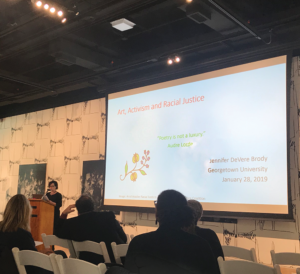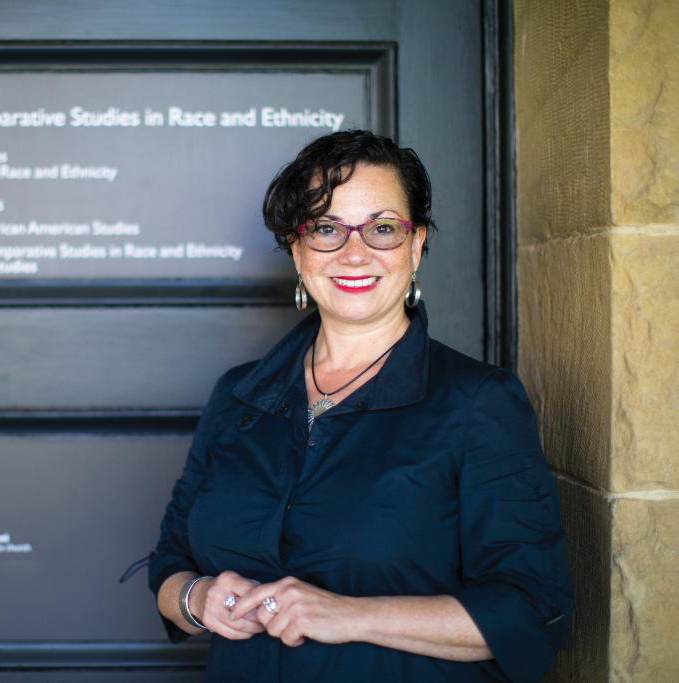
Surrounded by the work of Glenn Ligon, a prominent artist addressing social justice issues, Jennifer DeVere Brody explored the intersection between activism and racial justice through art in a lecture called “Free Form: Art, Activism and Racial Justice” at Georgetown’s Maria & Alberto de la Cruz Art Gallery on Monday.
Hosted by the departments of African-American studies and performing arts, as well as in collaboration with the Institute for Racial Justice, the talk is the first lecture in the series “Racial Justice: Art(s) and Activism” that demonstrates how these fields have led to social change with two future lecture dates already publicized.
Art, activism and racial justice are not disparate ideas but rather ones that connect to achieve substantive goals in society, according to Brody, who currently serves as a professor of theater and performance studies at Stanford University.
“It’s not merely knowledge for the sake of knowing, let alone art for art’s sake, but rather a step of knowledge in the service of justice,” Brody said.
The lecture series addresses University President John J. DeGioia’s charge to the Institute for Racial Justice, a research and outreach organization, to address these interlocking subjects further, according to Brody.
Brody described the goals of the 2016 charge, which includes supporting the African-American studies program, examining racial justice issues in the United States and providing sufficient resources to do so.
“These are noble and necessary actions that have resulted already in tangible change within the university community,” Brody said.
Brody’s lecture comprised three parts: artwork on sugar and its connection to slavery, the republication of one of James Baldwin’s artistic collaborations “Little Man, Little Man,” and the work of an activist group of LGBTQ people of color called People’s Kitchen Collective.
Brody has published two books that address the topic of her lecture: “Impossible Purities: Blackness, Femininity, and Victorian Culture” and “Punctuation: Art, Politics, and Play.” The amount of examples of activist art can be overwhelming even just considering the last 50 years, according to Brody.
“My talk aligns itself with the profound hope at the heart of the charge; it is meant to sound a call to action, to contemporary redress, to respond to precarious citizens past and present, and to witness if not rectify racial justice,” Brody said.
The arts are central to this goal of racial justice through activism, which makes a call to change traditional university structures so crucial for Brody.
“Universities typically institutionalize a hierarchical division of labor between scholars and researchers or artists and practitioners,” Brody said. “The segregation of faculty and students as well as disciplines make art and those who perform it, think about and study art into a kind of false dichotomy that represses what is actually a critical intellectual component of any artistic work and the imaginative creative dimension of scholarship.”
While Brody is the first speaker of this lecture series, artists will be following her lead. Brody believes that their inclusion is necessary to increase the level of the charge, rectifying the othering that has occurred.
“This matters because part of the charge of the task force is to change the face of the university,” Brody said. “Such a shift I argue must not only be quantitative, but also, and perhaps most importantly, qualitative. We must not change the color but also the content of academic culture.”
Brody called on the audience to understand the pertinence of racial justice, a goal of which she believes art is a vital facet.
“I want to close now with the Rev. Dr. Martin Luther King Jr., who would have been 90 had he lived this year, who understood that the struggle for racial justice was not for negro rights alone,” Brody said. “The vision for peace and power, for achieving racial justice is global in both senses of the term, as well as urgent and possible.”














